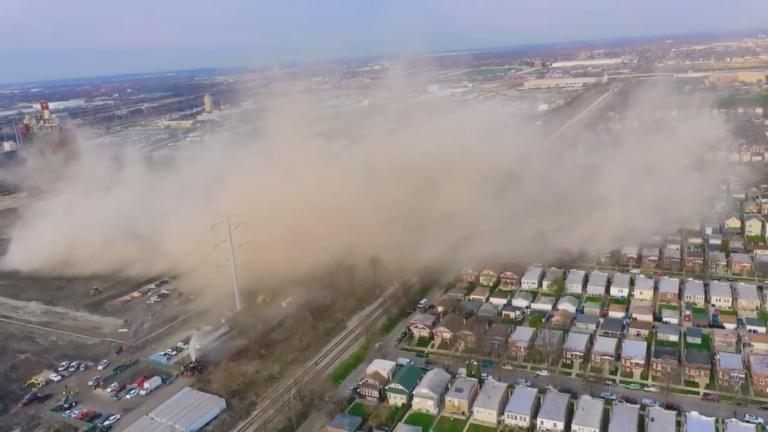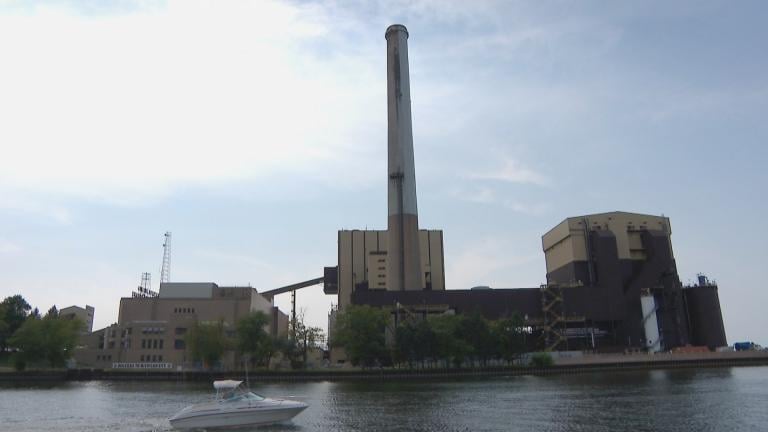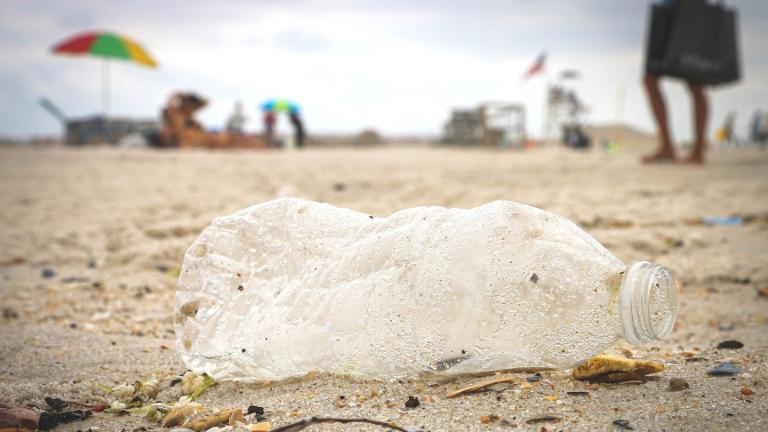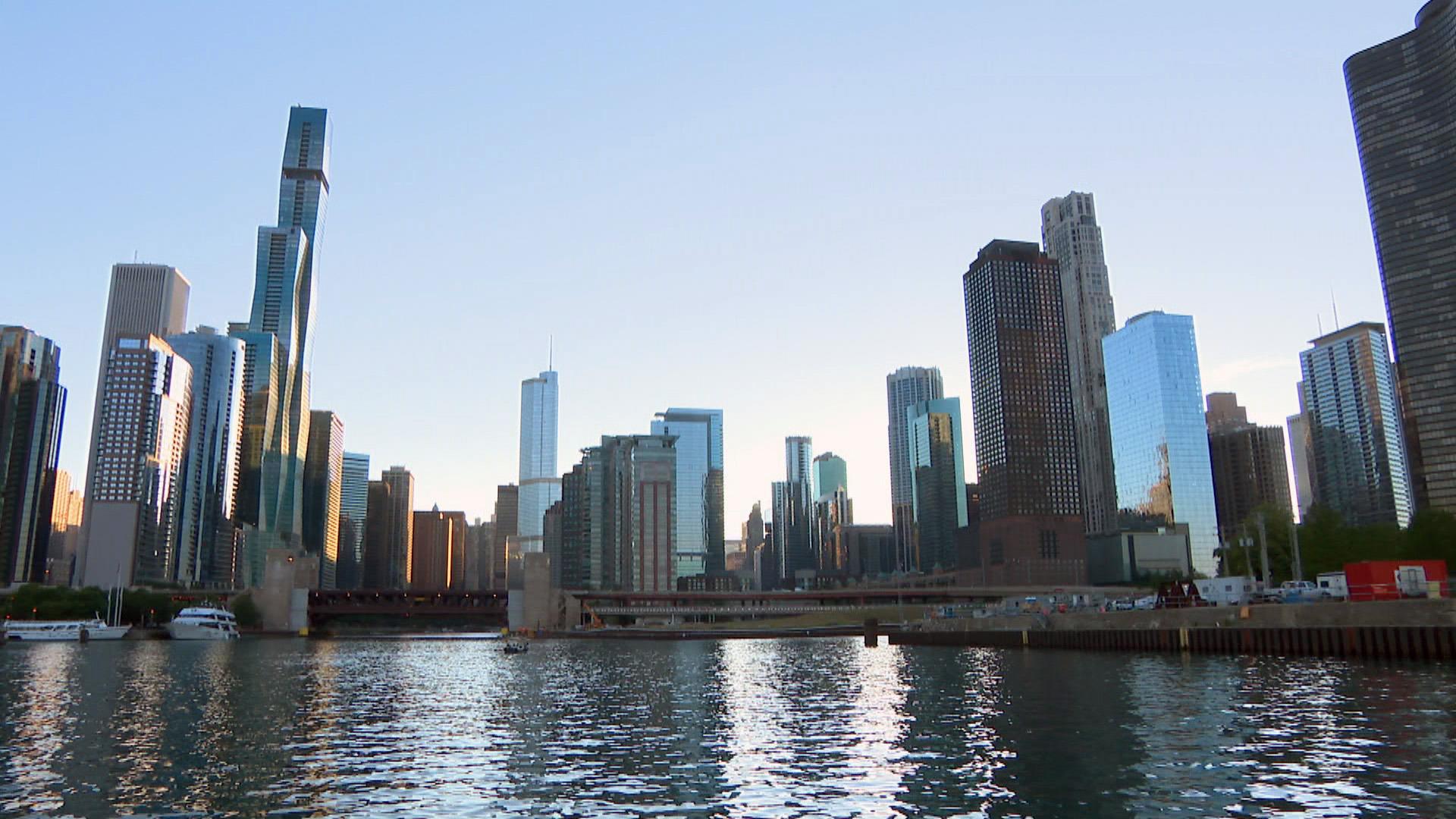 (WTTW News)
(WTTW News)
Lakefront real estate has long been some of the most coveted in Chicago, but those stunning views mask an uglier side: air pollution.
A new study by researchers at Northwestern University shows that people who live in neighborhoods along Chicago’s interstates — particularly I-290, I-90 and I-94 — and in communities directly next to Lake Michigan are exposed to more air pollution than residents in the rest of the city.
The study was conducted by Daniel Horton and Anastasia Montgomery, who developed a high-resolution simulation of air pollution for the southern Lake Michigan region, including neighborhood-level estimates of air quality over Chicago.
Horton and Montgomery tracked three pollutants: nitrogen dioxide, fine particulate matter (soot, dust and smoke) and ozone. According to their findings, neighborhoods along the interstates, including the Loop, experience twice the concentration of nitrogen dioxide and particulate matter than communities with the lowest pollution in Chicago. People who live along the lake are exposed to more ground-level ozone pollution.
Nitrogen dioxide and ozone can both cause shortness of breath, aggravate lung diseases and lead to asthma.
The same methodology the researchers used to pinpoint air pollution hot spots can also be used to test solutions, Horton said in a statement.
“The beauty of using a numerical model is that we can run experiments to see what solutions would improve air quality and, with this model, we can explore solutions that target those most affected,” he said.
Here’s what else caught our attention this week.
Legislation
On Thursday, the U.S. House of Representatives passed H.R. 1, the Lower Energy Costs Act, or, as environmental organizations have dubbed the bill, the “Polluters Over People Act.”
Among the bill’s provisions: It repeals the Methane Emissions Reduction Program; repeals the home electrification rebate program; and weakens the National Environmental Policy Act.
Here is Rep. Sean Casten (D-Illinois, 6th District) speaking against the bill on the House floor.
Legal Action
We conclude the pollution portion of today’s column with news of a lawsuit filed in the Circuit Court of Cook County by a number of suburban Chicago municipalities against Monsanto. (See the lawsuit text below.)
The case revolves around PCBs (polychlorinated biphenyls), the highly carcinogenic chemical compounds banned by the U.S. back in 1979. Because the chemicals don’t readily break down, there’s still plenty of the stuff lurking about in the environment, including in the Great Lakes.
Towns like Evanston, Lake Forest, Winnetka, Zion and North Chicago have been mandated by the EPA to reduce the amount of PCBs they discharge in stormwater to Lake Michigan. While the towns aren’t questioning the mandate, they are questioning why they should have to foot the bill to scrub PCBs from their discharge.
Because Monsanto made the mess, Monsanto should pay to clean it up, they argue.
Zoos and Aquariums
It feels like we need to clear the air after those last few items. How about a video of penguins at the Shedd Aquarium preparing for mating season?
Staff at the aquarium has supplied nest-building materials like rocks, pieces of hose and lavender to mimic options available in their native habitats. Check out the birds as they hop into action.
And for a double dose of cuteness, here’s one of the Amur leopard cubs whose birth was just announced by the San Diego Zoo.
The once numerous cats — formerly found in northeastern China, Russia and the Korean peninsula — are now categorized as critically endangered. Fewer than 100 remain in the wild, with another 200 of the leopards being managed by institutions.
Brookfield Zoo is one of the participants in the Association of Zoos and Aquariums’ Amur Leopard Species Survival Plan. The zoo has welcomed cubs of its own in recent years, one of whom, a male named Sasha, was born in 2020 and still lives at the zoo. In 2021, Brookfield welcomed a female Amur leopard, Mina, from a zoo in New York, as a future mate for Sasha. Plans are to attempt a love connection (wink, wink) this year or next.
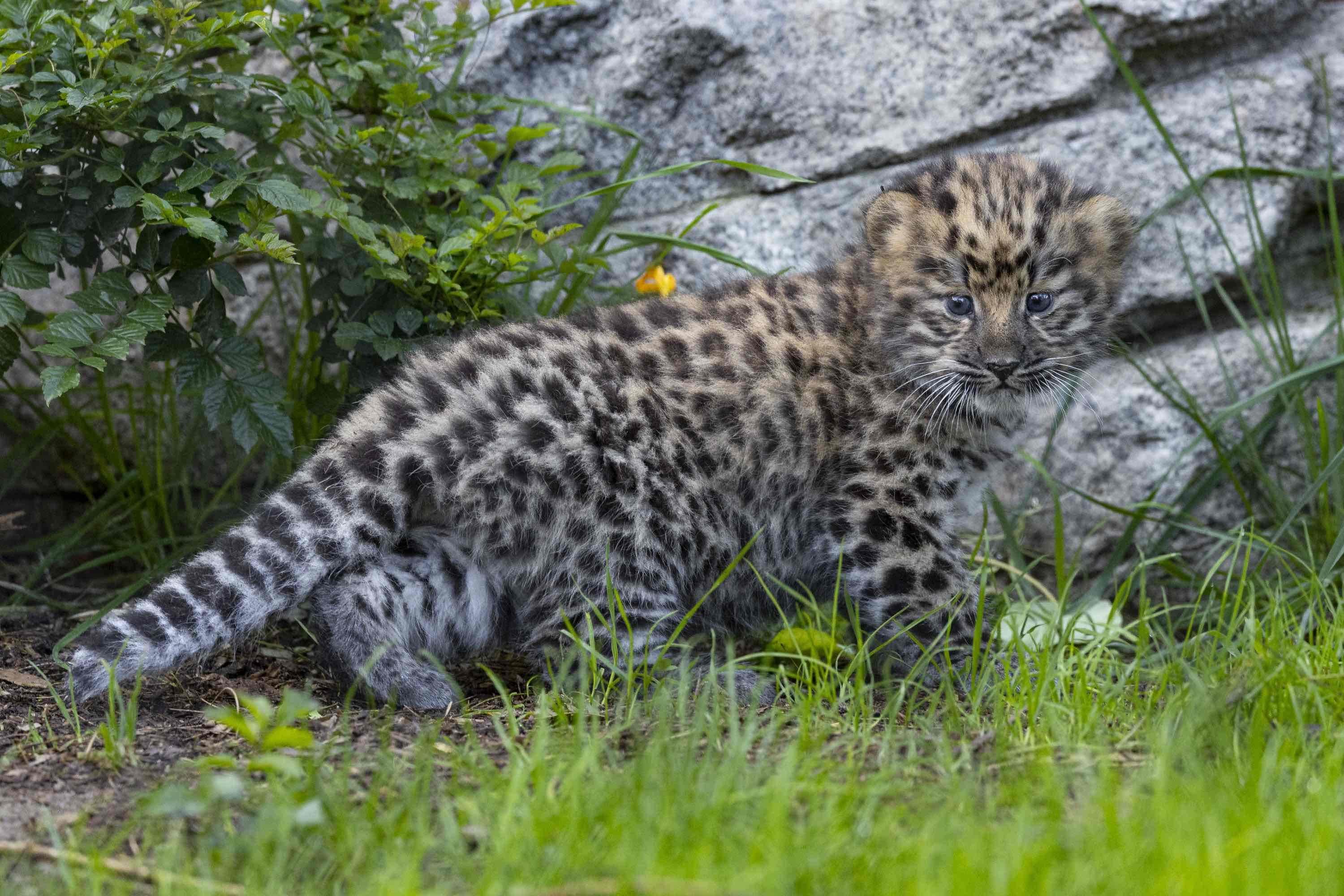 The San Diego Zoo just announced the birth of a pair of Amur leopard cubs. One of the cats is pictured exploring its habitat. (Courtesy San Diego Zoo Wildlife Alliance)
The San Diego Zoo just announced the birth of a pair of Amur leopard cubs. One of the cats is pictured exploring its habitat. (Courtesy San Diego Zoo Wildlife Alliance)
Insects
You can’t spell plant without “ant,” and it turns out, the two are as linked in nature as they are in language.
There are 4 quadrillion ants on the planet — everywhere but Antarctica — and a research scientist at the Field Museum, Matthew Nelsen, helped crack the nut of how these insects came to be so ubiquitous.
Everywhere plants went, ants followed, Nelsen and his co-authors concluded in a recently published study.
“This study shows the important role that plants play in shaping ecosystems,” Nelsen said. “Shifts in plant communities — such as those we are seeing as a consequence of historic and modern climate change — can cascade and impact the animals and other organisms relying on these plants.”
Tweet of the Week
Oh Mr. Fossil Locator, you had us at “pulled out my Geiger counter.” (The replies are one of the reasons “science and nature Twitter” is still one of the best corners of the Internet.)
Was opening a mixed bag of rocks I won at auction (there was a variscite I wanted) and noticed one of the rocks had a suspicious pastel color. Pulled out my Geiger counter and yup pic.twitter.com/IkOK2hp1Za
— Fossil Locator (@FossilLocator) March 29, 2023
Contact Patty Wetli: @pattywetli | (773) 509-5623 | [email protected]

